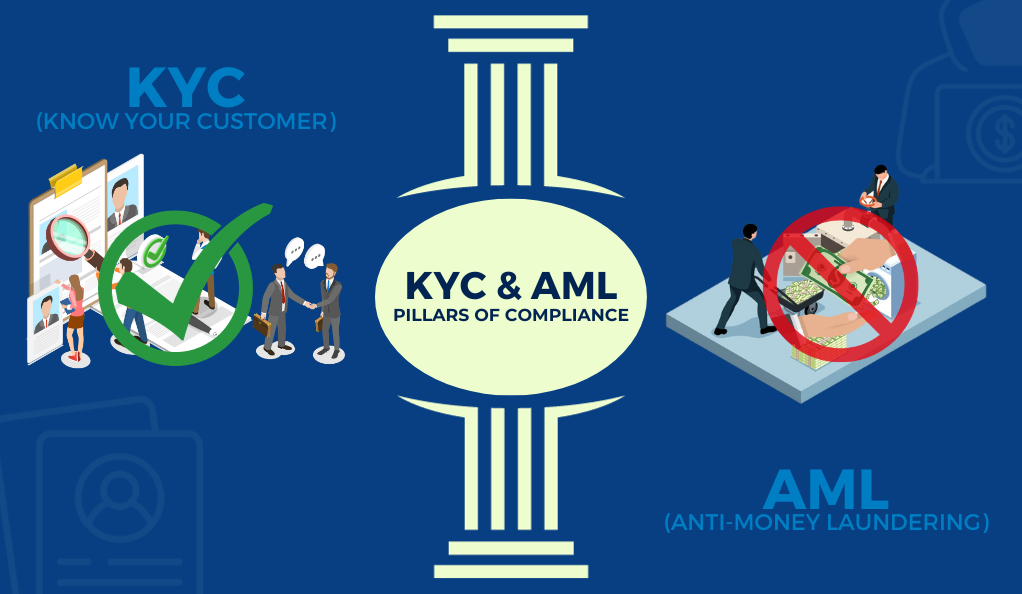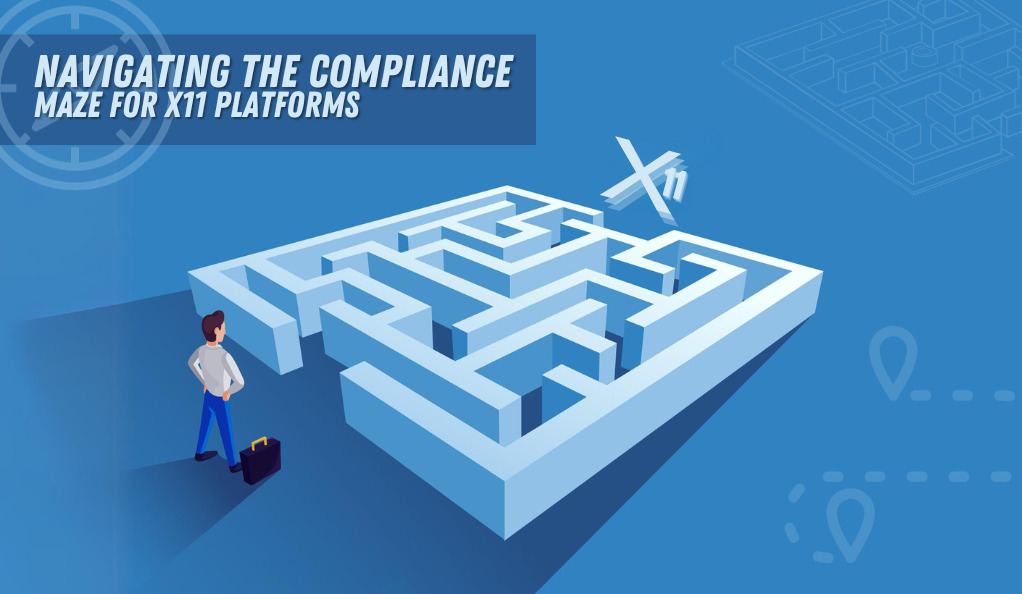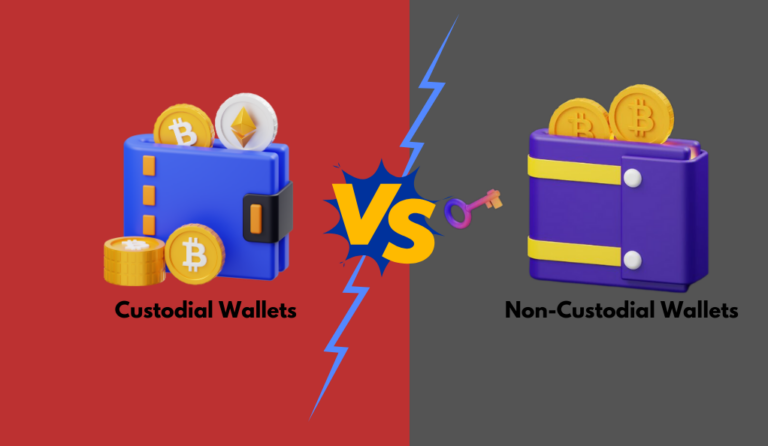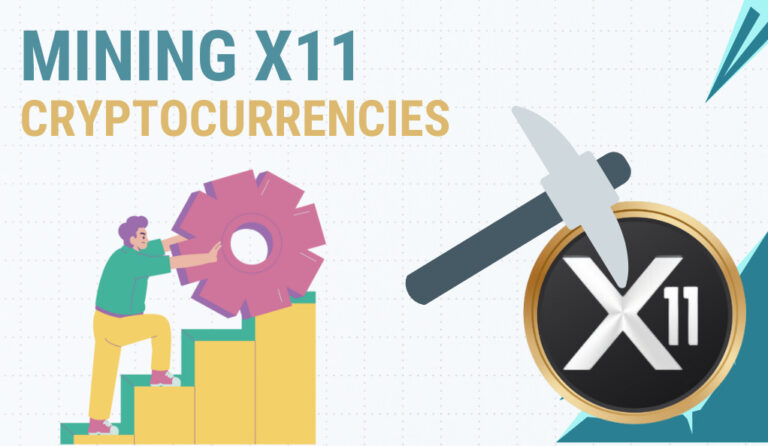In the vast and intricate world of cryptocurrencies, the X11 algorithm stands out as a beacon of innovation and security. As digital currencies continue to reshape the global financial landscape, understanding the regulatory environment surrounding them becomes paramount. This is especially true for X11, a unique cryptographic sequence that has garnered significant attention from both investors and regulators alike. This article delves deep into the ripple effect of major jurisdictions on X11 cryptocurrency laws, shedding light on the global influence these regulations exert on compliance, trading platforms, and the broader crypto ecosystem.
The Global Landscape of Cryptocurrency Regulations
Cryptocurrencies, once relegated to the fringes of the financial world, have now firmly established themselves as formidable assets in the global economy. As of 2023, the total market capitalization of cryptocurrencies has skyrocketed to an astounding $1.5 trillion, with thousands of unique digital currencies vying for a piece of the pie.
| Year | Number of Active Cryptocurrencies | Total Market Cap |
|---|---|---|
| 2010 | 1 (Bitcoin) | $0.06 Billion |
| 2015 | 550+ | $4.3 Billion |
| 2020 | 5,000+ | $250 Billion |
| 2023 | 10,000+ | $1.5 Trillion |
This meteoric rise has not gone unnoticed by regulatory bodies. As cryptocurrencies become more integrated into mainstream financial systems, the need for clear, comprehensive, and consistent regulations becomes evident. Different jurisdictions have approached this challenge in varied ways, with some embracing the potential of digital currencies, while others approach with caution, seeking to mitigate potential risks.
The X11 algorithm, with its unique combination of eleven different hashing functions, presents its own set of regulatory challenges and opportunities. Its energy efficiency, security features, and the rapid adoption of X11-based cryptocurrencies mean that jurisdictions worldwide are paying close attention.
The Rise of Cryptocurrency and the Need for Compliance
The last decade has witnessed an unprecedented surge in the popularity and acceptance of cryptocurrencies. Once dismissed as a fleeting trend or a niche market, digital currencies have now become a cornerstone of modern financial systems, challenging traditional notions of currency, value, and exchange.
Historical Growth of Cryptocurrency
The meteoric rise of cryptocurrencies is best understood by examining their historical growth. Beginning with Bitcoin’s inception in 2010, the cryptocurrency market has witnessed exponential expansion. In terms of active cryptocurrencies, the market grew from just Bitcoin in 2010 to over 550 by 2015, surpassing 5,000 by 2020, and reaching an astounding 10,000+ by 2023. Concurrently, the total market capitalization surged from a mere $0.06 billion in 2010 to $4.3 billion in 2015, skyrocketing to $250 billion in 2020, and reaching a staggering $1.5 trillion by 2023, according to various crypto market analysis reports. This remarkable growth has garnered significant attention from not only investors and enthusiasts but also regulators and policymakers globally.
The Role of Trading Platforms and Their Responsibilities
With the proliferation of cryptocurrencies came the rise of trading platforms – digital marketplaces where users can buy, sell, and exchange these digital assets. These platforms, often referred to as exchanges, play a pivotal role in the crypto ecosystem. They serve as gatekeepers, facilitating transactions and ensuring the smooth functioning of the crypto market.
However, with this influential position comes immense responsibility. As the primary intermediaries in the crypto world, trading platforms are often under the scrutiny of regulatory bodies. Their operations, security measures, user verification processes, and transaction monitoring mechanisms are all subject to regulations designed to safeguard investors and maintain the integrity of the financial system.
For instance, trading platforms are expected to:
- Implement Robust Security Protocols: To protect users’ funds and personal information from cyber threats.
- Conduct Thorough User Verification: Often referred to as Know Your Customer (KYC) procedures, this involves verifying the identity of platform users to prevent fraudulent activities and ensure compliance with anti-money laundering (AML) regulations.
- Monitor Transactions: To detect and report suspicious activities, thereby playing a crucial role in curbing financial crimes like money laundering and terrorist financing.
- Stay Updated with Regulatory Changes: Given the dynamic nature of the crypto landscape, regulations can evolve rapidly. It’s imperative for platforms to stay abreast of these changes and adapt accordingly.
The unique nature of X11-based cryptocurrencies adds another layer of complexity to this already intricate landscape. With their distinct features and growing popularity, ensuring compliance for X11 trading platforms becomes even more crucial.
X11 Crypto Trading Platforms: A New Frontier
In the diverse universe of cryptocurrencies, the X11 cryptographic algorithm has emerged as a notable player, distinguishing itself through its unique design and capabilities. As the crypto world continues to expand, understanding the nuances of X11 and the trading platforms that support it becomes essential for both investors and regulators.
Introduction to the X11 Cryptographic Algorithm
At its core, the X11 algorithm is not just a single hashing function but a chain of eleven different hashing functions. This multi-layered approach offers a robust security framework, ensuring that even if one function is compromised, the entire chain remains secure. The combination of these functions makes X11 one of the most secure cryptographic sequences in the crypto domain.
But what truly sets X11 apart is its energy efficiency. Compared to other algorithms, such as Bitcoin’s SHA-256, X11 is significantly more energy-efficient. This efficiency has led to a surge in mining activities, making X11-based cryptocurrencies an attractive option for miners.
The Distinct Nature of X11 Cryptocurrencies
X11’s unique design has given birth to several digital currencies, each with its own set of features and value propositions. These cryptocurrencies often prioritize user privacy, offering advanced anonymity features that, while beneficial for users, can pose verification challenges for trading platforms.
Moreover, the rapid adoption of X11-based cryptocurrencies means that trading platforms supporting these currencies are experiencing significant growth. With this growth comes the responsibility to ensure that these platforms operate within the bounds of global and local regulations.
Challenges and Opportunities Presented by X11
The distinct nature of X11 presents both challenges and opportunities for trading platforms:
- Challenges:
- Enhanced Compliance Monitoring: The energy efficiency of X11 boosts mining activities, necessitating rigorous compliance monitoring.
- User Privacy vs. Verification: X11-based cryptocurrencies often emphasize user privacy, which can complicate the KYC processes for trading platforms.
- Rapid Adoption: The swift growth of X11-based cryptocurrencies demands that trading platforms quickly adapt to diverse compliance needs.
- Opportunities:
- Attracting a Niche Market: The unique features of X11 can help platforms cater to a specific segment of crypto enthusiasts, setting them apart from competitors.
- Leading in Compliance: Platforms that prioritize and excel in compliance can establish themselves as industry leaders, attracting more users and fostering trust.
- Collaboration with Regulators: Engaging proactively with regulatory bodies can provide platforms with insights and guidance, ensuring they stay ahead of the curve.
Understanding the Basics of Compliance in Crypto
In the revolutionary realm of cryptocurrencies, the importance of compliance stands as a pillar of trust, security, and legitimacy. While the decentralized nature of cryptocurrencies offers unparalleled freedom and innovation, it also brings forth complexities that necessitate a robust framework of regulations and standards. This section delves into the foundational aspects of compliance in the crypto world, emphasizing its significance in ensuring the safety and credibility of digital assets and their associated platforms.
Pillars of Compliance: KYC and AML

Two of the most fundamental components of compliance in the crypto domain are KYC (Know Your Customer) and AML (Anti-Money Laundering). These mechanisms serve as the first line of defense against illicit activities and financial crimes.
- KYC (Know Your Customer): This process requires businesses, including crypto trading platforms, to verify the identity of their clients. In the context of cryptocurrencies, KYC typically involves collecting personal information such as names, addresses, and photographic identifications. The primary goal is to ensure that platforms are not inadvertently facilitating transactions for individuals involved in illegal or suspicious activities.
- AML (Anti-Money Laundering): AML measures aim to prevent the conversion of illegally obtained funds into legitimate assets. For crypto trading platforms, this translates into monitoring transactions to detect and report any suspicious activities. By implementing rigorous AML procedures, platforms can play a pivotal role in curbing financial crimes like money laundering, terrorist financing, and other fraudulent activities.
The Role of Global Regulatory Bodies
As the crypto industry continues to mature, various regulatory bodies across the globe have taken the mantle to oversee and guide the operations of crypto trading platforms. Their primary objective is to ensure that these platforms adhere to established financial laws and regulations, fostering a secure and transparent environment for users.
Some of the most prominent regulatory bodies include:
- SEC (U.S. Securities and Exchange Commission): In the United States, the SEC plays a crucial role in regulating securities markets. They have issued guidelines indicating that certain cryptocurrencies might be classified as securities, thus falling under their jurisdiction.
- FCA (Financial Conduct Authority): The UK’s FCA has been at the forefront of setting guidelines for crypto assets. Their proactive approach ensures that platforms operate transparently and prioritize consumer interests.
- ASIC (Australian Securities and Investments Commission): In Australia, ASIC provides guidance on the legal responsibilities of crypto trading platforms. Their emphasis on AML and KYC procedures showcases their commitment to ensuring a safe trading environment.
The Importance of Compliance in Building Trust
Compliance is not just about adhering to rules and regulations; it’s about building trust. In an industry often marred by skepticism and uncertainty, platforms that prioritize compliance set themselves apart. By adhering to global standards, they not only minimize legal risks but also instill confidence among users. A platform known for its stringent compliance measures is more likely to attract and retain users, fostering a reputation of reliability and integrity.
The Unique Challenges of X11 Crypto Trading Platforms
The world of cryptocurrency is vast and varied, with each cryptographic algorithm bringing its own set of advantages and challenges. Among these, the X11 algorithm stands out, not only for its technical prowess but also for the unique compliance challenges it presents. This section delves into the intricacies of X11, exploring the challenges and opportunities it offers to trading platforms.
Introduction to X11 as a Cryptographic Algorithm
X11 is not just any cryptographic algorithm; it’s a chain of eleven different hashing functions. This multi-layered design ensures unparalleled security. Even if one function is compromised, the entire chain remains intact and secure. Beyond security, X11 is renowned for its energy efficiency, especially when compared to algorithms like Bitcoin’s SHA-256. This efficiency has led to a surge in mining activities, making X11 a favorite among many in the crypto community.
Why X11 Platforms Require Special Attention
The unique characteristics of X11 necessitate specialized attention, especially from a compliance perspective:
- Energy Efficiency Boosts Mining: The energy-efficient nature of X11 has led to increased mining activities. While this is beneficial from an environmental standpoint, it demands enhanced compliance monitoring to ensure that the mining processes adhere to local and global regulations.
- Prioritization of User Privacy: Many X11-based cryptocurrencies prioritize user privacy, sometimes offering advanced anonymity features. While this is a significant advantage for users seeking privacy, it poses challenges for platforms in terms of verification and transaction monitoring.
- Rapid Adoption and Growth: The benefits of X11, from its security to its energy efficiency, have led to its rapid adoption. This swift growth means that trading platforms supporting X11 must be agile, adapting quickly to the diverse and evolving compliance needs specific to X11-based cryptocurrencies.
Navigating the Compliance Maze for X11 Platforms
Compliance for X11 crypto platforms hinges on key pillars. Regular internal audits ensure platforms stay updated and can monitor X11-specific anomalies. Engaging with regulatory bodies provides clarity on compliance, especially given X11’s uniqueness. Balancing user verification with privacy is vital, as X11 cryptocurrencies often emphasize anonymity, requiring platforms to adopt advanced verification while respecting user privacy.
Best Practices for X11 Platforms
For X11 platforms, ensuring compliance is an ongoing commitment. Some best practices include:
- Risk Assessment: Before implementing any compliance measures, platforms should conduct thorough risk assessments, identifying potential vulnerabilities and addressing them proactively.
- Continuous Monitoring: Given the dynamic nature of the crypto world, continuous transaction monitoring is essential. This involves investing in advanced tools and technologies that can detect suspicious activities in real-time.
- User Education: Platforms can foster a culture of compliance by educating users about the importance of security measures and the implications of regulatory non-compliance.
- Transparency and Open Communication: Maintaining clear transaction records and being open to audits can build trust among users and regulatory bodies alike.
Navigating the Compliance Maze for X11 Platforms

The world of X11 cryptocurrencies, while brimming with innovation and promise, is also fraught with complexities, especially when it comes to compliance. As regulators worldwide grapple with the rapid evolution of the crypto landscape, X11 trading platforms find themselves at the intersection of technological advancement and regulatory scrutiny. This section delves into the labyrinth of compliance for X11 platforms, offering insights and strategies to navigate this intricate maze.
The Ever-Evolving Regulatory Landscape
The crypto regulatory environment is in a state of constant flux. As governments and regulatory bodies strive to keep pace with technological advancements, new guidelines, rules, and standards are frequently introduced. For X11 platforms, staying updated with these changes is not just a matter of adherence but also a testament to their commitment to user safety and market integrity.
| Year | Major Regulatory Changes |
|---|---|
| 2020 | Introduction of stricter KYC procedures for crypto transactions. |
| 2021 | Enhanced scrutiny on crypto mining due to environmental concerns. |
| 2022 | Implementation of global standards for crypto taxation. |
| 2023 | Specific guidelines introduced for X11-based cryptocurrencies, focusing on user privacy and transaction transparency. |
Importance of Internal Audits and Regulatory Engagement
For X11 platforms, proactive engagement is the key to successful compliance:
- Internal Audits: Regular internal audits can help platforms identify potential compliance gaps, ensuring that they are not only adhering to current regulations but are also prepared for upcoming changes. These audits should be comprehensive, covering aspects like transaction monitoring, user verification processes, and security protocols.
- Regulatory Engagement: Building a collaborative relationship with regulatory bodies can offer platforms valuable insights. By engaging in open dialogues, platforms can gain clarity on regulatory expectations, seek guidance on complex issues, and even contribute to the formulation of future guidelines.
Best Practices for Robust Cryptocurrency Compliance

In the dynamic world of X11 cryptocurrencies, robust compliance hinges on a blend of technology and human expertise. Platforms should leverage advanced tools, especially AI and machine learning, for real-time transaction monitoring and adherence to KYC and AML standards. Continuous staff training is crucial to stay updated with compliance norms. Balancing regulatory requirements with user experience is essential, and maintaining transparency in transactions reinforces trust, solidifying the platform’s credibility in the crypto ecosystem.
The Future of Compliance in X11 Crypto Trading Platforms
As we stand on the cusp of a new era in the world of cryptocurrencies, the future beckons with promises of further innovations, challenges, and opportunities. The X11 algorithm, with its unique blend of security and efficiency, is poised to play a significant role in this future landscape. However, as with all technological advancements, the path forward is intertwined with the need for robust compliance. This section casts a gaze into the future, exploring the potential trends, challenges, and strategies for compliance in X11 crypto trading platforms.
Predictions and Trends for the Future
The crypto landscape is dynamic, and predicting its exact trajectory can be challenging. However, based on current trends and expert insights, several key predictions emerge:
- Increased Global Collaboration: As the crypto market becomes more interconnected, there will be a push towards global regulatory standards. This will involve collaborative efforts between countries to establish a unified framework for crypto compliance.
- Emphasis on Eco-Friendly Mining: With growing concerns about the environmental impact of crypto mining, there will be a heightened focus on algorithms like X11, known for their energy efficiency. This could lead to a surge in X11-based cryptocurrencies, necessitating specific compliance measures.
- Advanced Compliance Technologies: The integration of AI and machine learning in compliance tools will become more prevalent. These technologies will enable real-time transaction monitoring, predictive analysis, and automated reporting, enhancing the efficiency and accuracy of compliance measures.
- User-Centric Compliance: As the user base of crypto platforms grows, there will be a shift towards more user-centric compliance measures. This will involve a balance between ensuring regulatory adherence and offering a seamless user experience.
The Role of Technology in Shaping Compliance
As we look to the future of compliance, technology undeniably takes center stage. Advanced tools, especially those integrated with AI capabilities, are set to revolutionize the way platforms approach compliance. These tools will facilitate real-time monitoring, allowing for the immediate detection of suspicious transactions and ensuring prompt action and reporting. Furthermore, through predictive analysis, platforms can proactively identify potential compliance risks by analyzing historical data and current market trends. Additionally, the advent of automated reporting will streamline communication processes, guaranteeing that interactions with regulatory bodies are both timely and precise.
Global Collaboration and User-Centric Measures
The future of compliance will hinge on two pivotal pillars:
- Global Collaboration: As the crypto market transcends borders, there will be a need for unified global standards. Collaborative efforts between countries, regulatory bodies, and platforms will be crucial in establishing and implementing these standards.
- User-Centric Measures: Compliance measures will evolve to prioritize user needs. This will involve simplifying verification processes, ensuring data privacy, and offering transparent communication about compliance measures and their implications.
Conclusion
The intricate world of X11 cryptocurrencies, with its blend of technological innovation and regulatory challenges, stands as a testament to the transformative power of the digital age. As major jurisdictions shape the trajectory of X11 cryptocurrency laws, trading platforms find themselves navigating a landscape marked by continuous evolution, necessitating adaptability, collaboration, and proactive engagement.
Looking ahead, the future of X11 platforms hinges on their ability to stay informed, prioritize user education, and foster a culture of compliance. Embracing these principles, while leveraging the opportunities presented by the X11 algorithm, will ensure a path forward marked by integrity, trust, and excellence in the ever-evolving crypto ecosystem.
At axerunners.com, our goal is to furnish well-rounded and trustworthy information regarding cryptocurrency, finance, trading, and stocks. Nonetheless, we avoid providing financial advice and instead encourage users to conduct their own research and meticulous verification.
Read More













